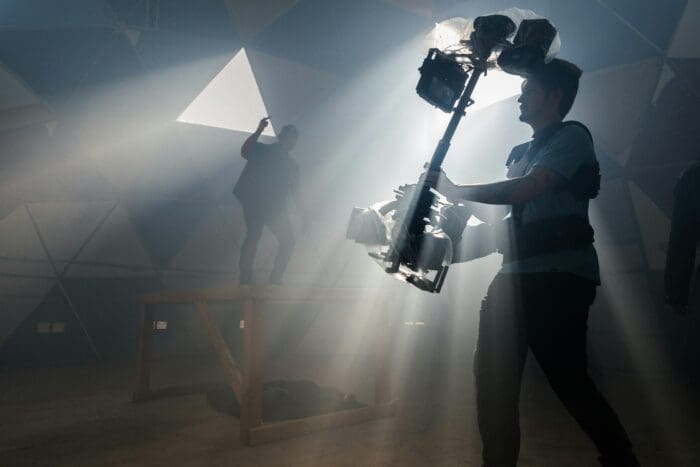There is something truly magical about the entertainment industry. It’s a chance for us to detach from the reality of everyday life by immersing ourselves in dramatic narratives, all-action sequences, and absorb the emotions that unfold on the big screen.
Have you ever wondered what goes on behind the curtain, whether it’s behind the camera lens of a movie set or behind the curtain of an on-stage production? What’s the special recipe that turns these performances into the captivating experiences we cherish for generations?
Within this article, we’ll explore the latest innovations and trends emerging behind the scenes in the world of movie and theatre production, adding a fresh dimension to shows and movie franchises young and old.
Harnessing the power of VR and AR
There are many examples of movie releases that have succeeded in implementing virtual reality (VR) and augmented reality (AR). By teleporting viewers directly into the narratives and environments created by directors and producers, VR gives viewers a chance to almost step into the shoes of the movie protagonists themselves. Even AR is proving a game-changer, with its ability to overlay virtual elements into real-world entertainment. Back in 2022, the producers of Marvel Comics film Black Panther: Wakanda Forever joined forces with Marvel Studios to develop some AR experiences, allowing fans to see ‘Wakandan-infused’ tech advancements with their own eyes.
VR isn’t the only medium that’s redefining the way we watch streams and movies at home or in the cinema. The advent of live streaming technology, coupled with the adoption of optical character recognition (OCR), has ushered in a new wave of entertainment online, especially with online casinos. High-definition camera angles offer multiple viewing options of a live dealer roulette table, with OCR technology rapidly recording the outcome of spins played out in a purpose-built studio and displaying them on desktop, PC and mobile screens worldwide.
Breaking the mould with camera and display technology
Sticking with the visual aspect of today’s entertainment industry, it’s also important to recognise the development in the visual quality of movies, streams and other productions. As cinema and home entertainment screens are becoming larger and more powerful than ever before, the need for even finer detail and colour contrast has grown simultaneously.
Enter stage left, the emergence of 8K resolutions and High Dynamic Range (HDR) technology. HDR is the closest match to the range of colours and lines the human eye can see. It’s said the human eye is capable of seeing 14 ‘stops’, while HDR can now provide viewers with access to up to 13 ‘stops’. Although very few television screens in households are ready for 8K resolutions, some movie producers are already embracing 8K resolutions for their next-generation releases. Bringing a four-hold enhancement on 4K resolution production, 8K also gives producers the ability to reframe shots in post-production without losing their on-screen integrity.
Redefining the post-production process
Post-production techniques like colour grading are fast becoming run-of-the-mill as opposed to a nice-to-have feature. Colour grading is one of the most effective ways of reshaping the visual tone of today’s movie releases. It gives producers the flexibility to encourage specific feelings or themes within viewers. Think of it as the gloss on top that makes the footage leap out from the screen.
Real-time rendering has been another game-changer for post-production. This technology aims to visualise and render visual effects at the same time as being shot. This agility gives film directors the ability to tweak their creative vision as they go. It’s one enormous time-saver, allowing production companies to get movies and shows out to the masses in double-quick time, both on and offline.
To conclude this assessment of the latest trends in entertainment production, it’s also important to discuss the growing theme of sustainability that runs through every element of today’s production processes. Whether it’s energy efficient practices and greener energy sources or the adoption of virtual technologies over physical options, productions are working hard to curb their carbon footprints and keep entertainment centre stage for decades to come.

